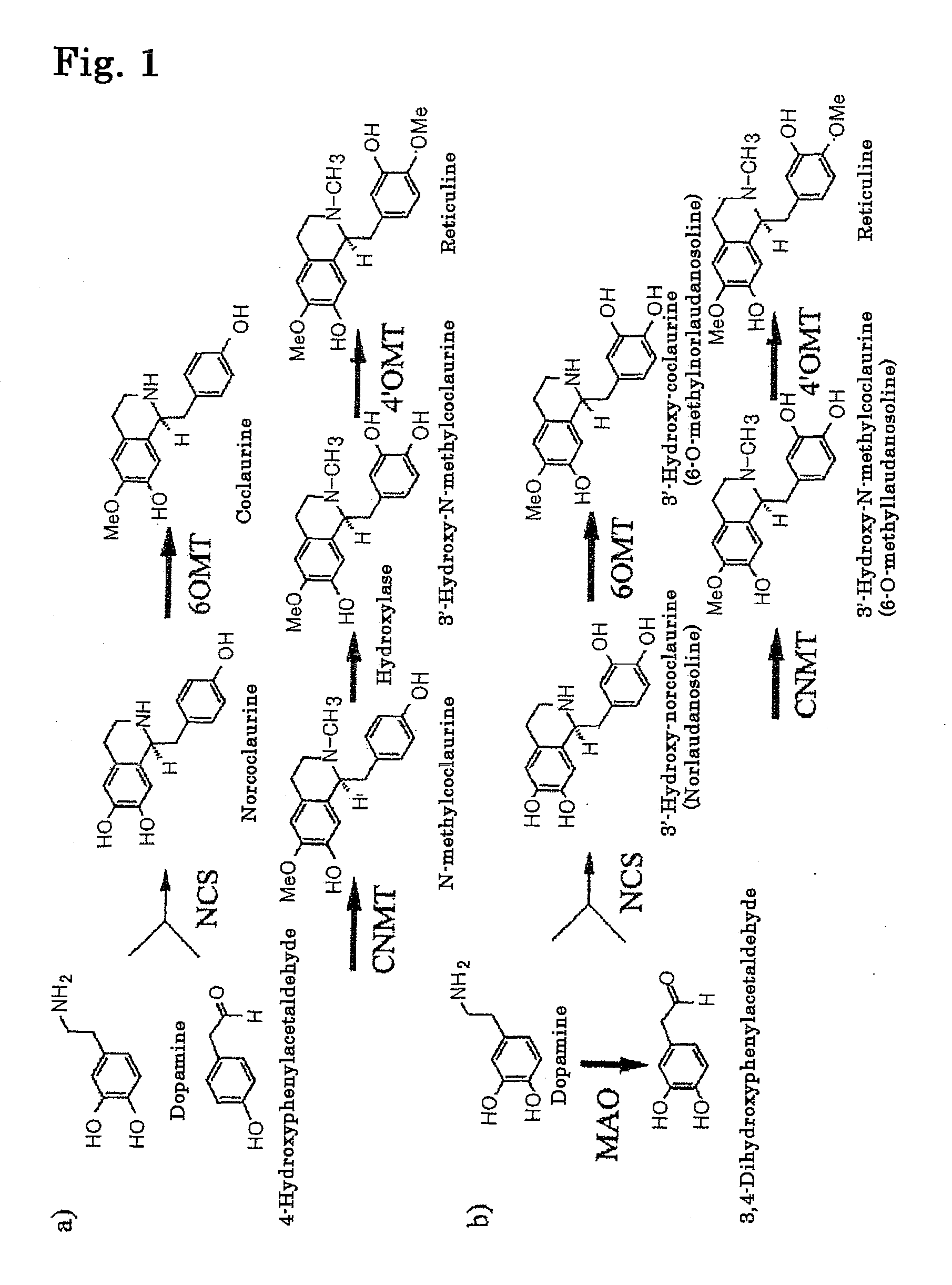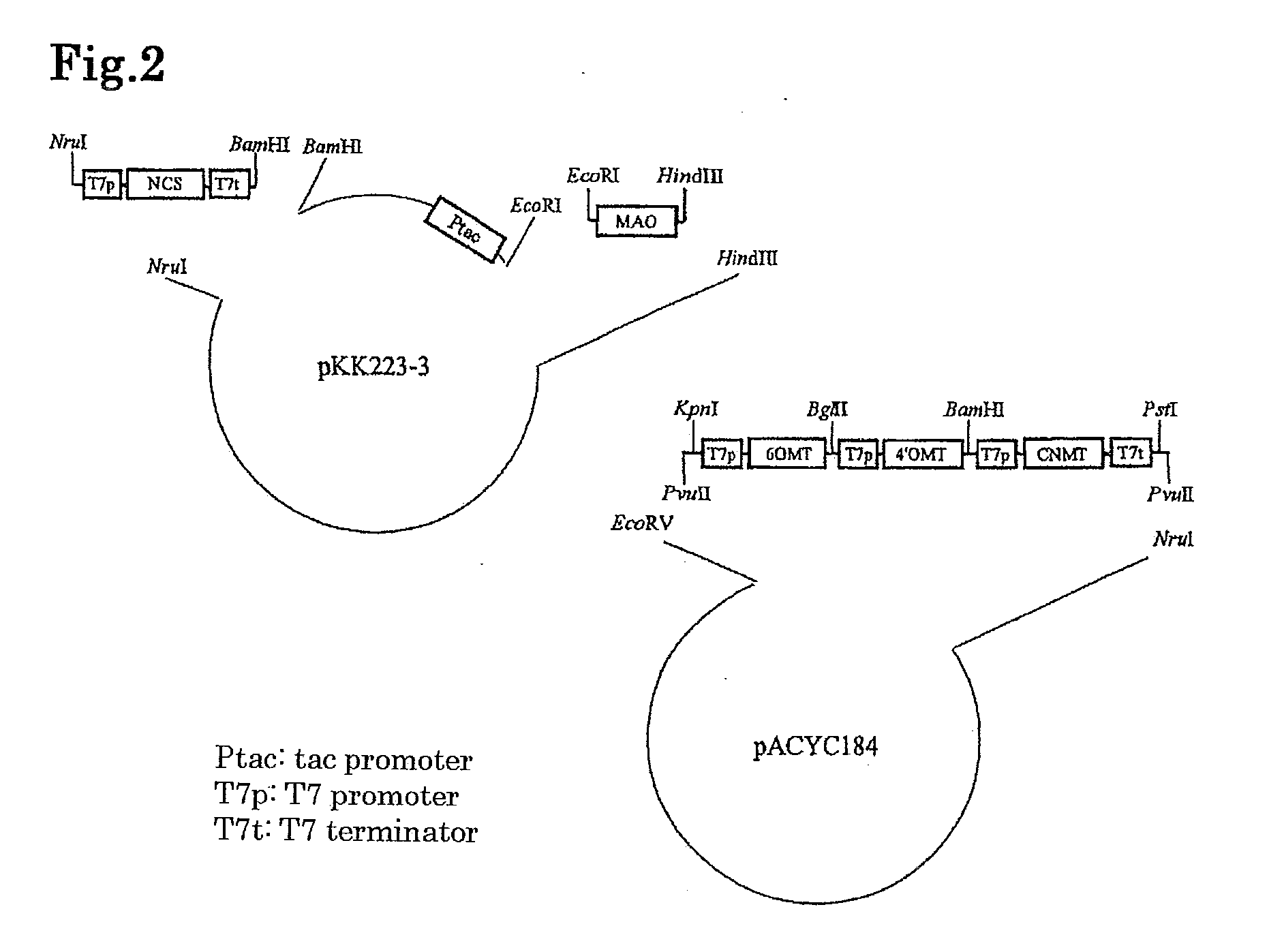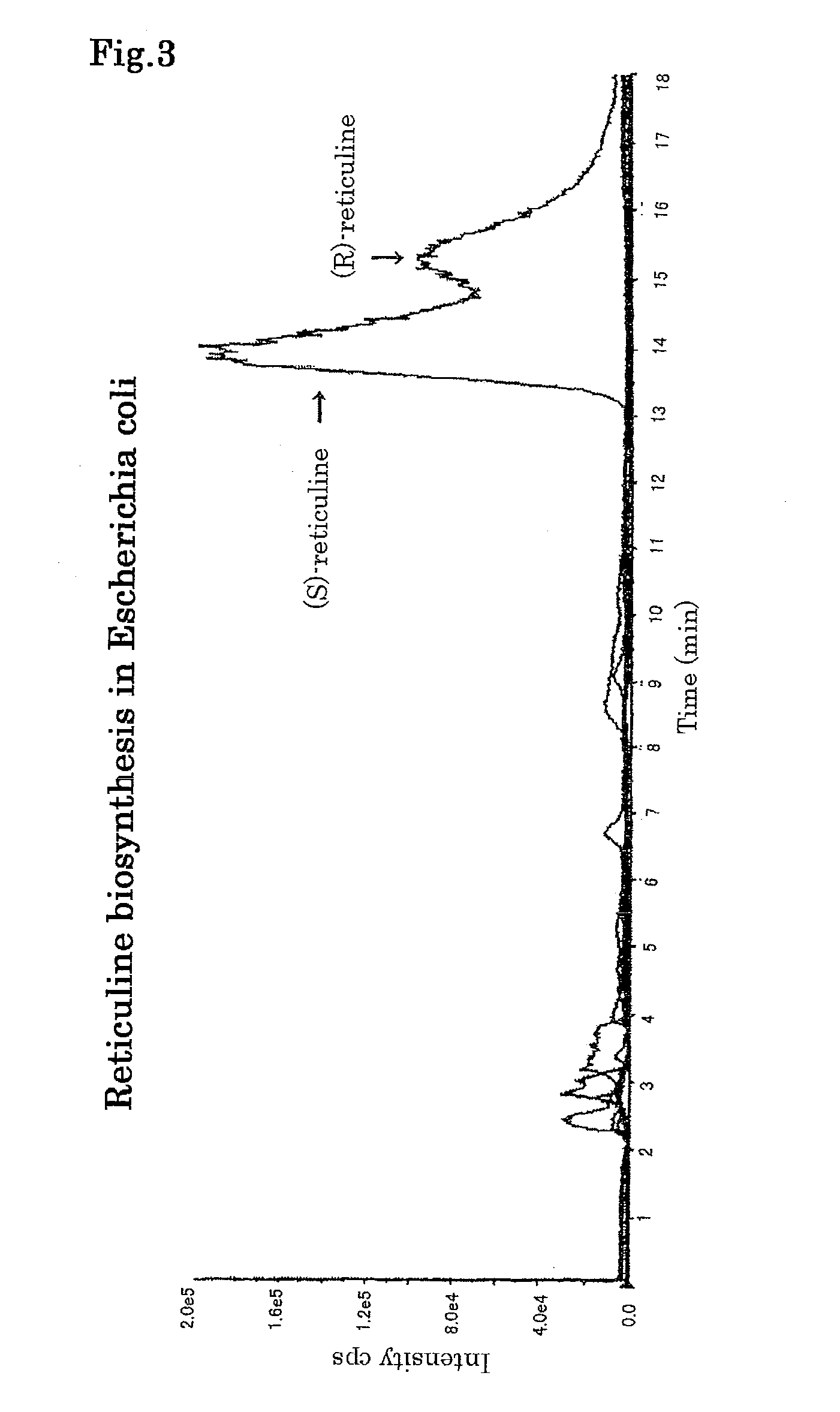Method for producing alkaloids
a technology of alkaloids and alkaloids, which is applied in the field of alkaloids and production methods, can solve the problems of difficult chemical synthesis of alkaloids, long time for plant growth or culture, and difficult production of alkaloids at a large scale using plants, and achieves high efficiency
- Summary
- Abstract
- Description
- Claims
- Application Information
AI Technical Summary
Benefits of technology
Problems solved by technology
Method used
Image
Examples
example 1
Reticuline synthesis in Escherichia coli
[0161]Reticuline which is an intermediate product of isoquinoline alkaloids is known to be biosynthesized via methylation at three stages and hydroxylation at one stage, after a condensation reaction of dopamine and 4-hydroxyphenylacetaldehyde (FIG. 1a). The present inventors found out that the step of hydroxylation can be omitted by using 3,4-dihydroxyphenylacetaldehyde in place of 4-hydroxyphenylacetaldehyde. Further, by using monoamine oxidase (MAO) derived from a microorganism (Micrococcus luteus), 3,4-dihydroxyphenylacetaldehyde can be synthesized from dopamine. That is, according to the present invention, effective reticuline synthesis from only dopamine becomes possible (FIG. 1b).
Experimental Procedure
Reagents
[0162]Dopamine was purchased from Sigma-Aldrich.
Construction of Expression Vectors pKK2232-3 and pACYC184 Containing Reticuline Biosynthesis Genes
[0163]Tac promoter or T7 promoter was added upstream of each of genes encoding enzym...
example 2
In Vivo Reticuline Biosynthesis
[0182]Reticuline biosynthesis in Escherichia coli cells was performed according to the same manner as that of the expression experiment of recombinant reticuline biosynthesis genes in Escherichia coli described above except for the following points.
[0183]At IPTG addition, dopamine was added to a final concentration of 2 mM. Cells were further cultured at 25° C. for 20 hours. The culture medium was centrifuged at 10,000×g for 5 minutes to remove bacterial cells. An equivalent amount of methanol was added to the centrifugation supernatant to remove proteins in the medium. Reticuline in the medium was measured by LC-MS (API 3200™ with Agilent™ HPLC system, Applied Biosystems Japan Ltd.).
Results
In Vivo Reticuline Biosynthesis
[0184]Reticuline in the medium was measured and, as a result, (R,S)-reticuline was biosynthesized by the reticuline biosynthesis gene expression strain (FIG. 3). The yield was 1.7 mg / L. By increasing a concentration of dopamine to be a...
example 3
In Vitro Reticuline Synthesis
[0185]In vitro reticuline synthesis was performed, and reticuline was measured by LC-MS. 100 μl of a standard enzyme reaction mixture consisted of the following: 100 mM Tris buffer, pH 7.5, 1 mM SAM (S-adenosylmethionine), 70 μl of the enzyme extract and 2 mM dopamine.
[0186]The reaction mixture was incubated at 37° C. for 60 minutes. The reaction was stopped by addition of an equivalent amount of methanol. After precipitation of proteins, the reaction product was measured qualitatively and quantitatively using LC-MS.
Reticuline Measurement by LC-MS
[0187]A sample was injected into ODS-80 Ts (Tosoh), and was eluted at a column temperature of 40° C. and a flow rate of 0.7 ml / min. The mobile phase was 40% acetonitrile+0.1% acetic acid. MS was ESI, and all products from dopamine to reticuline (m / z=153, 154, 288, 302, 316, 330) were measured at a positive mode. Quantification of reticuline was performed by measuring a peak area at m / z=330. A peak area was conve...
PUM
| Property | Measurement | Unit |
|---|---|---|
| temperature | aaaaa | aaaaa |
| concentration | aaaaa | aaaaa |
| pH | aaaaa | aaaaa |
Abstract
Description
Claims
Application Information
 Login to View More
Login to View More - R&D
- Intellectual Property
- Life Sciences
- Materials
- Tech Scout
- Unparalleled Data Quality
- Higher Quality Content
- 60% Fewer Hallucinations
Browse by: Latest US Patents, China's latest patents, Technical Efficacy Thesaurus, Application Domain, Technology Topic, Popular Technical Reports.
© 2025 PatSnap. All rights reserved.Legal|Privacy policy|Modern Slavery Act Transparency Statement|Sitemap|About US| Contact US: help@patsnap.com



